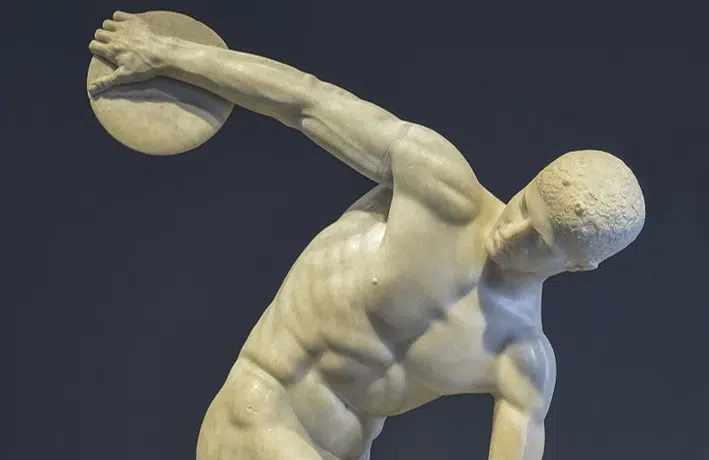
Even to this day, the legacy of ancient Greek athletes survives. Modern gym-goers will often comment that their goal is to get the body of a Greek god. Meanwhile, victory at the Olympic Games is regarded as the pinnacle of athletic achievement.
However, ancient Greek athletes were not born. Rather, they were made. Although many of the details have been lost to time, contemporary historians can form a general picture of how these sportsmen would have trained and prepared for contests.
In a culture that heavily prized athleticism, strength, and physical beauty, it is unsurprising that the ancient Greeks dedicated a great deal of time and effort to perfecting themselves in the gymnasium.
In the words of the philosopher Socrates, “It is a shame for a man to grow old without seeing the beauty and strength of which his body is capable.”
Sports and physical contests in ancient Greece
When it comes to sports, the ancient Greeks are most closely associated with the Olympic Games. For an ancient Greek athlete, winning an olive wreath at the Olympics was the ultimate honor.
However, sports were an important aspect of life in ancient Greece long before the Olympics began in 776 BC. One of the earliest mentions of sporting events by the Greeks was made by Homer in the Iliad.
At the funeral of Patroclus, Achilles holds athletic games to honor his friend. Each one of the contests imitates or resembles a skill that would be useful in battle. They include boxing, wrestling, running, armed one-on-one combat, weight-throwing, archery, and chariot racing.
Many of these same events would later be included in the Olympic Games. The Iliad is a fictionalized account, but most historians now believe it is based on an actual siege that took place in the twelfth or thirteenth century BC, so the Greeks had a very long athletic tradition indeed.
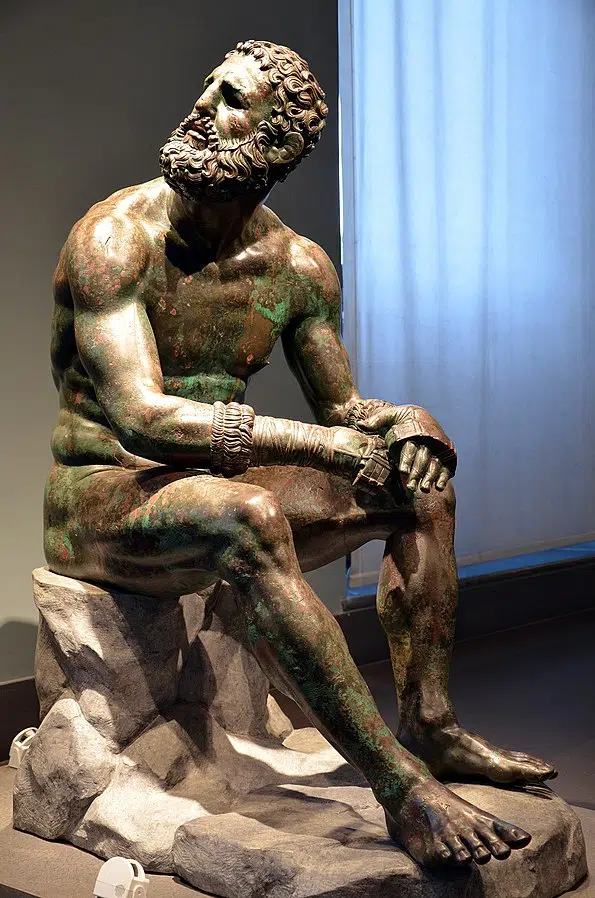
The paidotribes, athletic trainers of ancient Greece
For an ancient Greek athlete to succeed, he needed proper instruction. According to Clayton Miles Lehmann, a professor of History at the University of South Dakota, an ancient Greek athletic trainer was called a paidotribes (plural: paidtoribai).
The earliest definitive reference to a paidotribes can be found in one of the theoretical legal cases of Antiphon, an Athenian orator who lived in the mid-fifth century BC. Antiphon described a hypothetical case in which a young boy had been accidentally killed by a javelin during training led by a paidotribes.
An earlier possible reference may have appeared in the laws of Solon, referred to in a speech by the Greek statesman and orator Aeschines in the sixth century BC. He mentioned how laws regulated the opening times of gymnasiums. However, the supposed trainer is referred to as gymnasiarch, not a paidotribes, which may have meant he was the gymnasium owner.
In any case, paidotribai were responsible for instructing ancient Greek athletes and boys, either for sporting competitions like the Olympics or for general physical conditioning and preparation for war.
In Plato’s Gorgia, a paidotribes describes the purpose of his work as being “to make men’s bodies beautiful and strong.” In practice, this may have involved coaching relating to a specific sport, more general strength and conditioning guidance, and caring for athletes by rubbing olive oil on their bodies.
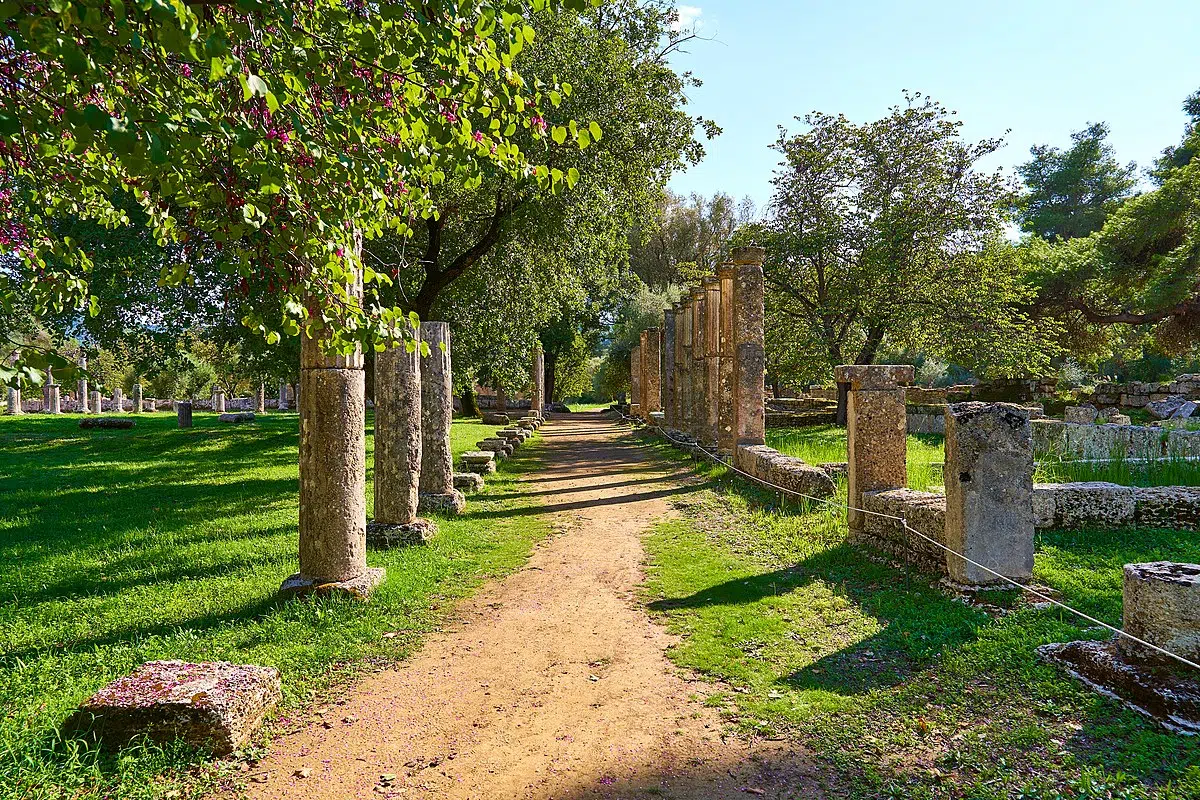
Training methods of an ancient Greek athlete
Piecing together the exact methods used by ancient Greek athletes to train is not a straightforward task. As Lehmann points out, “we have to use very scattered literary texts.”
It is also worth considering how training methods would likely have varied immensely between different athletes and trainers, as they do in the contemporary era. Greek athletes competed in very different sports and their training would have reflected this as well.
The best surviving literary source is Philostratus, a Greek sophist of the Roman period, who lived in the second and third centuries AD. Around the time Philostratus was writing, there is also evidence that Greek paidotribai were employed by the Romans to train gladiators in strength and conditioning.
Philostratus described the traditional Greek athletic training program as being a four-day cycle called the tetrad. An ancient Greek athlete following a tetrad program would focus on a different type and intensity of training on each day of the cycle.
According to Philostratus, during a typical tetrad, “The first day prepares the athlete; the second is an all-out trial; the third is relaxation; and the fourth is a medium-hard workout.”
Philostraus wrote that the first day “is made up of short, intense movements which stir up the athlete and prepare him for the hard workout to follow on the next day.”
The second day was the hardest in the tetrad and consisted of “an all-out test of [an athlete’s] potential.
“The third [day] employs his energy in a moderate way, while on the day of the medium workout [or last day], the athlete [himself] practices breaking holds and preventing his opponent from breaking away,” Philostratus wrote.
It is important to note that the training Philostraus described on the fourth day relates to a wrestler, boxer, or practitioner of pankration. Athletes who were not training for combat sports probably used the fourth day to focus on other sports-specific exercises.
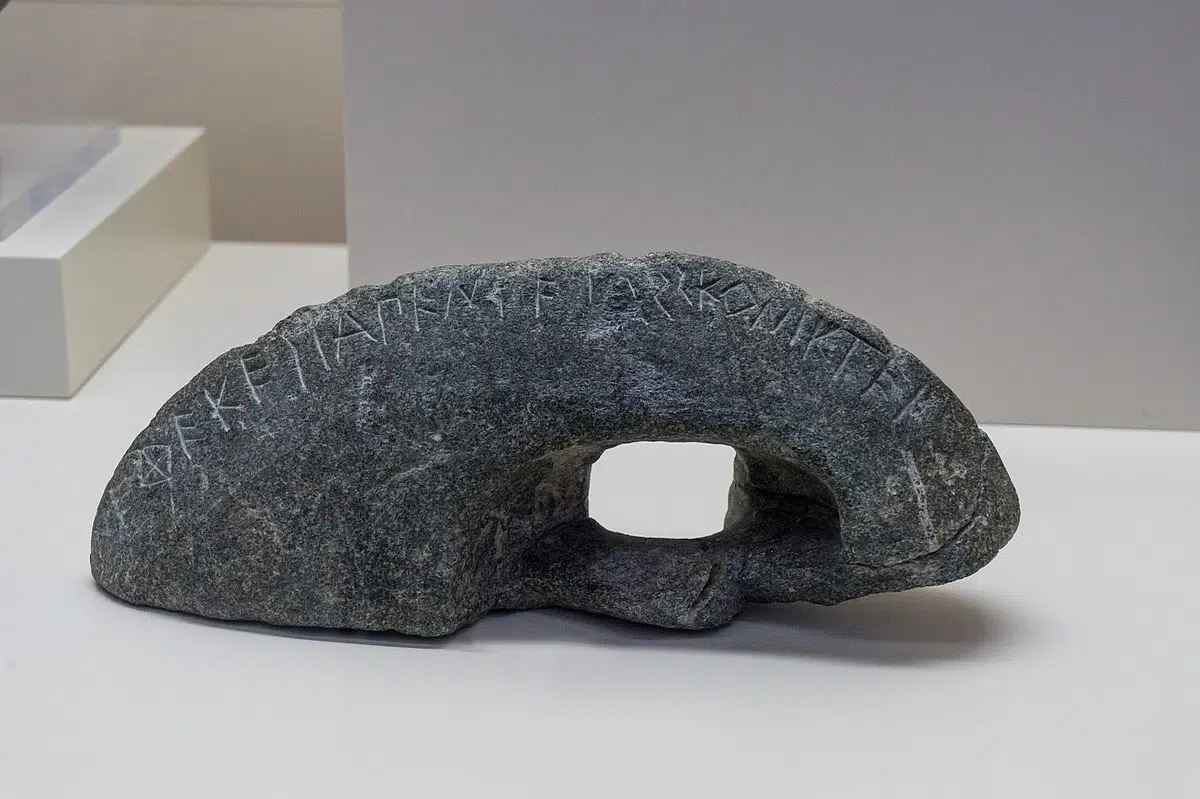
Training philosophies
The tetrad was not a universally accepted method of training athletes. Philostratus certainly noted that this four-day cycle had its critics. Much like today, fierce debate appears to have existed in ancient Greece as to what the best form of training was.
More broadly, beyond the tetrad system, Philostratus “described training activities that included endurance running, lifting weights, and exercise that included wrestling with beasts, especially lions.”
This latter part may have been a fabrication, although former UFC lightweight champion and mixed martial artist Khabib Nurmagomedov is known to have trained in his childhood by wrestling with bear cubs in the mountains of Dagestan, so there may be some truth to the claim.
Either way, even the more fantastical stories about ancient Greek training practices reveal certain insights. For example, Milo of Croton, widely considered to be the most successful wrestler and strongman in ancient Greece, was said to have built his strength by carrying a calf on his back until it was a fully-grown bull.
A fully grown adult bull can weigh five hundred to a thousand kilograms (1,100 to 2,200 pounds), so unless Milo of Croton literally was a Greek god, this feat would have been impossible. However, it does reveal something important: the Greeks had an understanding of the concept of progressive overload.
Progressive overload is when an athlete gradually increases the weight, repetitions, or frequency of exercises in a weight training routine. This is done to improve performance and build more muscle.
An ancient Greek athlete who was in search of athletic glory and aesthetic perfection would have been aware of this concept even if they did not understand the science behind it.
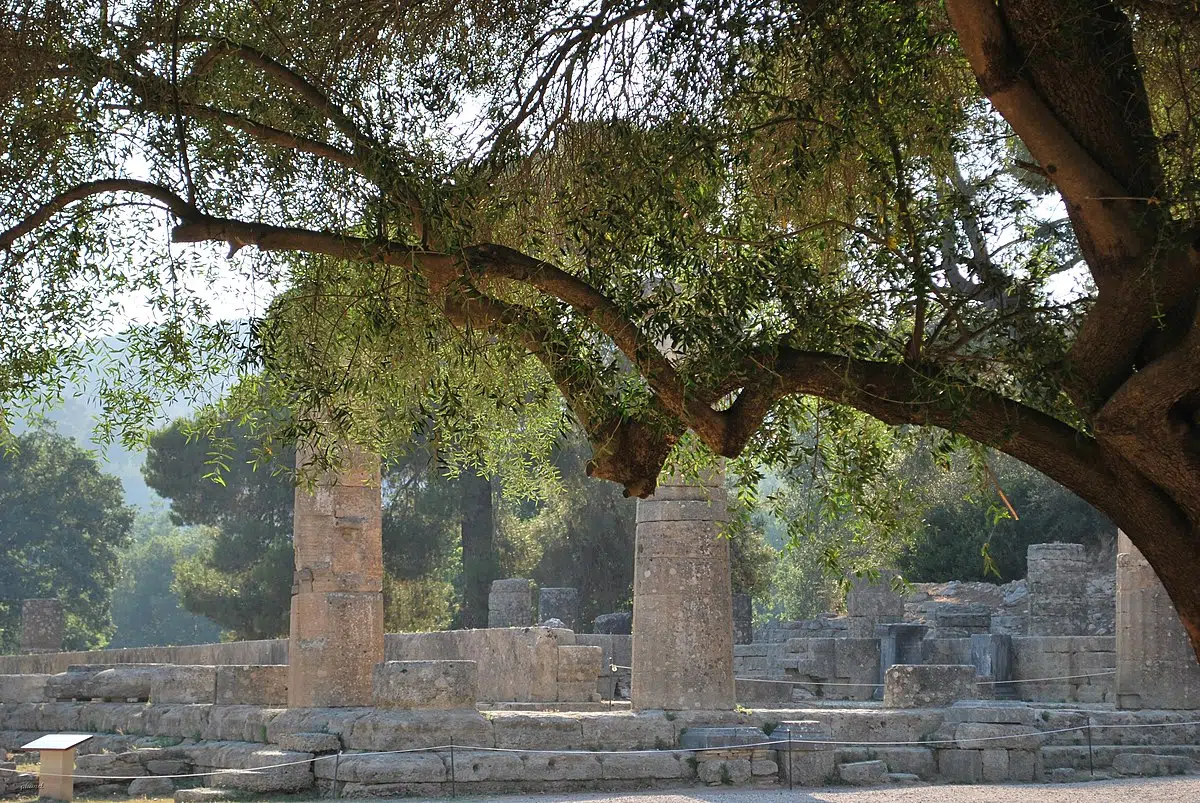
Equipment
For many exercises, ancient Greek athletes did not require any equipment. In fact, the word for calisthenics, a category of strength exercises that relies on using body weight, may have come from the Greek phrase, kilos sthenos, meaning “beautiful strength.”
However, the ancient Greeks were also fond of using equipment to train. At the palaestra where boxing and wrestling were taught, athletes would usually have access to punching bags filled with flour and either fig seeds or sand.
The ancient Greeks even had their own form of dumbbells called halteres. These were used at least as far back as 700 BC and were a staple in Greek gymnasiums by the fifth century BC. They were used for weightlifting but also as a tool for the long jump.
More crude instruments could also serve as equipment. Amphorae, heavy pottery, or large stones could be lifted by athletes to increase their strength. One such stone was found with an inscription that read “Bybon son of Phola, has lifted me over head with one hand.”
Bybon must have been very strong indeed because the stone was found to weigh 143 kilograms (316 pounds). For comparison, the current world record for the heaviest dumbbell press is 153 kilograms (338 pounds).
See all the latest news from Greece and the world at Greekreporter.com. Contact our newsroom to report an update or send your story, photos and videos. Follow GR on Google News and subscribe here to our daily email!



